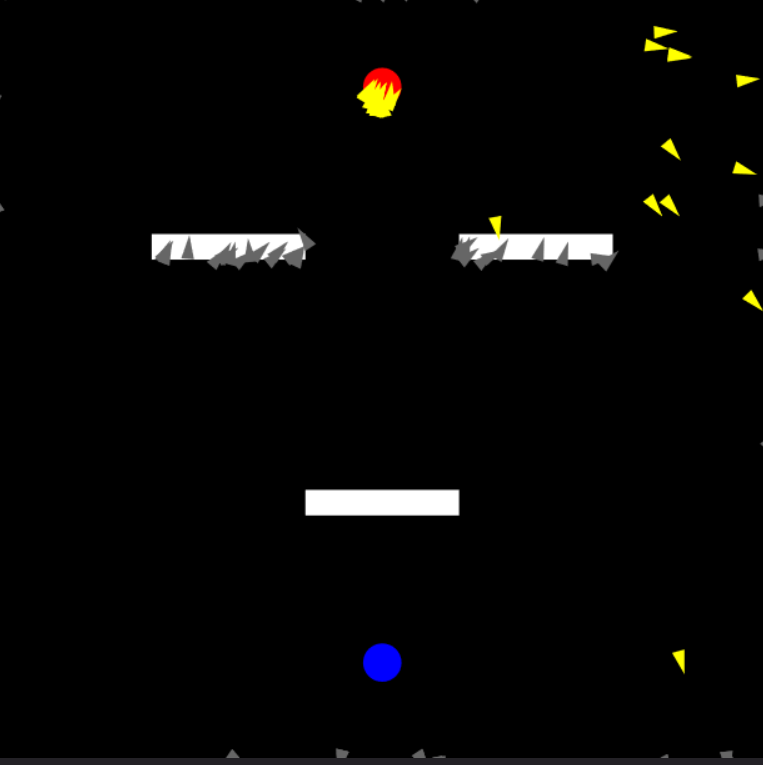Genetic Algorithm
This simulation uses survival of the fittest gene to improve the performance of boids across generations.
Simulation
Each yellow-shaped triangular entity is known as a boid. The maximum lifespan of a boid is 500 frames. Each boid has it's own, unique gene, with 500 nucleotides. Each nucleotide is a number such that the \( i^{th} \) nucleotide determines the angle that the boid turns in the \(\ i^{th} \) frame. Initially, all boids have random genes. At the beginning of each generation, the boids start from the source (blue circle). They need to reach the target (red circle) while avoiding collisions with the obstacles (white rectangles) and the boundary walls.
Gene with maximum fitness:
Drag an entity to change it's location
Layouts
Detour

Simple

Default

Description
At the end of each generation, the fitness \( f \) of each boid is measured. It is given by the following formula: \[ f = f_0 + \frac{1}{d} \] where \( f_0 \) is the baseline fitness and \( d \) is the distance between the boid and the target in the final frame. There are negative feedbacks for crashing into obstacles and walls, and positive feedbacks for reaching the target faster. The greater the fitness of a boid, the more likely that its genes (or segments of it) will be present in the next generation of boids. For generating each boid of the next generation, two parents are randomly chosen (based on their fitness), and random halves of their genes are incalculated into the offspring. Finally, randomly selected nucleotides are slightly nudged. The former process is called recombination whereas the latter is called mutation. As generations pass, the total fitness as well as the average fitness of the population increases. Eventually, the boids are able to traverse complex layouts and make it to the target in large numbers.
Note:
- If evolution is taking longer than usual, or if the boids have gone down a irrecoverable/fruitless path of evolution, then please consider restarting the evolution by clicking the last button
- Changing the location of the source, target or the obstacles during the course of evolution will redirect it's course. Boids will eventually adapt to the new conditions
- Genetic Algorithm is used in various aspects of Machine Learning
- Related: Gradient Descent, Polynomial Regression, K-means clustering.
Developed by ChanRT | Fork me at GitHub